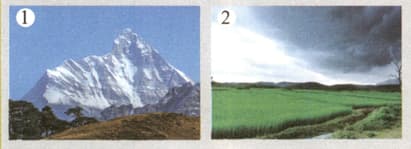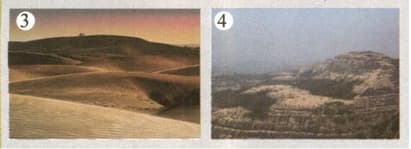What do you think is the importance of having a variety of physical division for a country?

Important Questions on India: Physical Features
The given pictures show the various physical features of India. You have to connect each of the features to its correct location on the map of India. Use the numbers on the pictures to mark the location of the features on the map.


Can you locate these on a physical map of India?
Mawsynram and Cherrapuniji, two of the world’s wettest places, are situated on the slopes of the Khasi Hills in Meghalaya.
The Yamuna, on the bank of which India’s capital city Delhi is located, is the largest tributary of the Ganga. It merges with the Ganga at a point near Allahabad (now Prayagraj), called the Sangam.
Most rivers in the Deccan Plateau flow from the west to the east because the slope of the Deccan Plateau is from m in the west to m in the east—a tilt towards the Bay of Bengal. Before they reach the sea, they deposit all the material they carry at their mouths, forming large and fertile deltas.
The Narmada and Tapi rivers rise in the Central Highlands and flow westwards to the Arabian Sea. They do not form deltas but reach the sea through estuaries.
Find out why.
